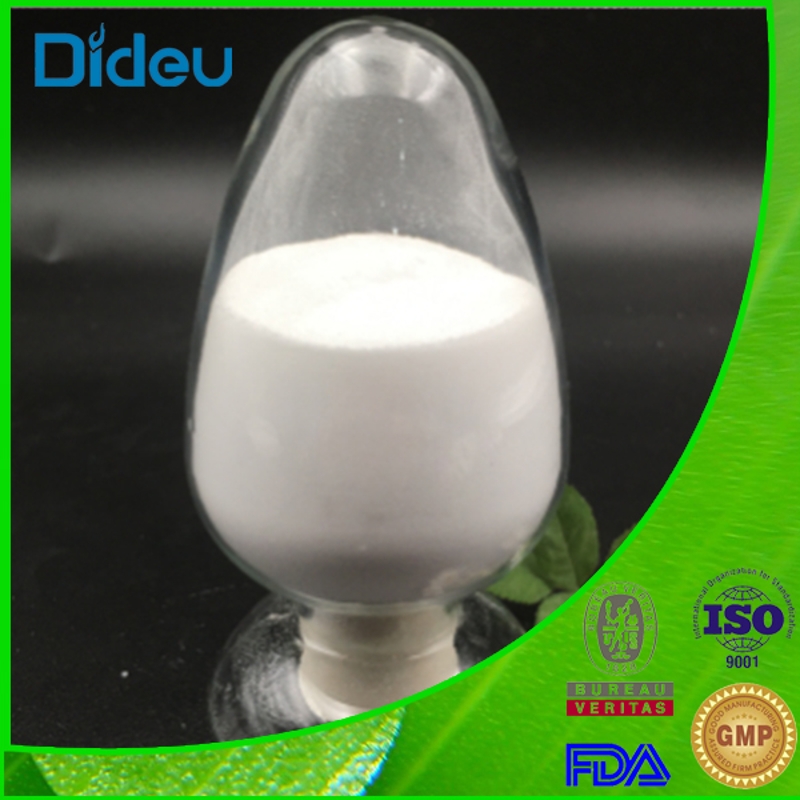-
Categories
-
Pharmaceutical Intermediates
-
Active Pharmaceutical Ingredients
-
Food Additives
- Industrial Coatings
- Agrochemicals
- Dyes and Pigments
- Surfactant
- Flavors and Fragrances
- Chemical Reagents
- Catalyst and Auxiliary
- Natural Products
- Inorganic Chemistry
-
Organic Chemistry
-
Biochemical Engineering
- Analytical Chemistry
- Cosmetic Ingredient
-
Pharmaceutical Intermediates
Promotion
ECHEMI Mall
Wholesale
Weekly Price
Exhibition
News
-
Trade Service
The activation of plant innate immunity depends on the perception of microorganisms through elicitors.
Rhamnolipid and its precursor 3-hydroxyalkanoate (HAA) are produced by bacterial metabolism, and they participate in bacterial surface propagation and biofilm development
.
Because these compounds are released in the extracellular environment, they may be sensed by the plant's immune system
.
On September 28, 2021, from the University of Reims in Paris, France, the Romain Schellenberger team dedicated to the research of plant induced resistance published an online publication titled "Bacterial rhamnolipids and their 3-hydroxyalkanoate precursors activate Arabidopsis innate immunity through two independent mechanisms" in the PNAS journal Research papers
.
This study proved that rhamnolipids (RLs) and their precursor HAA independently activate plant immunity
.
And HAA is sensed by the receptor protein kinase LORE, while RLs are not sensed by LORE, but it activates the non-specific immune response that is affected by the sphingolipid component of the plant plasma membrane
.
First, the author detected the production of apoptotic reactive oxygen species triggered by RLsec (a mixture of RL homologues and HAA precursors released by Pseudomonas) in Arabidopsis and whether RLsec induces the semi-biological vegetative plant pathogen syringa The local resistance of Pseudomonas proves that RLsec induces immune-related signals and disease resistance in Arabidopsis thaliana, partly mediated by the lectin RK LORE
.
It is known that compared with RLsec, pure RLs do not trigger the LORE-dependent [Ca2+]cyt and early ROS signal response.
Because RLsec contains a large amount of HAAs, the authors set out to study the effects of HAA and 3-OH-C10 on Arabidopsis [Ca2+ ] Induction of cyt and ROS
.
It is proved that the HAAs secreted by Pseudomonas are sensed by the lectin RK LORE, activate the typical PTI-related immune response, and gain resistance to bacterial infection
.
In order to study whether RLs can activate the LORE-independent immune response, the author used and purified the most abundant Rha-Rha-C10-C10 from Pseudomonas aeruginosa RLsec to test whether it stimulates the production of reactive oxygen species
.
ROS was not detected in lore.
After a series of experiments, it was proved that in Arabidopsis, RLs activate a non-specific immune response, which has nothing to do with LORE, but is affected by the composition of plasma membrane sphingolipids
.
All in all, the authors show that the lipid secretion group from Pseudomonas aeruginosa, which mainly includes RLs and HAAs, stimulates the immunity of Arabidopsis
.
It was demonstrated that HAA is sensed by the lectin receptor kinase LORE, which also mediates the perception of 3-hydroxy fatty acid (mc-3 -OH-FA) in the plant Arabidopsis
.
HAA induction induces typical immune signal transduction and local resistance to phytopathogenic Pseudomonas
.
In contrast, RLs trigger an atypical immune response and fight Pseudomonas infection independently of LORE
.
In addition, the results also show that the immune response triggered by RLs is affected by the composition of plasma membrane sphingolipids
.
Original link: https://doi.
org/10.
1073/pnas.
2101366118 Plant Biotechnology Pbj Exchange Group In order to more effectively help the majority of scientific researchers to obtain relevant information, Plant Biotechnology Pbj established a WeChat group, and Plant Biotechnology Journal submitted contributions.
As well as literature-related questions, official account release content and official account submission questions, they will be concentrated in the group for answers, and at the same time, academic exchanges and collision thinking in the group are encouraged
.
In order to ensure a good discussion environment in the group, please add the editor WeChat first, scan the QR code to add, and then we will promptly invite you to join the group
.
Tips: When adding the editor WeChat and after joining the group, please be sure to note the school or unit + name, and the PI should be noted at the end, and we will invite you to join the PI group
.
Rhamnolipid and its precursor 3-hydroxyalkanoate (HAA) are produced by bacterial metabolism, and they participate in bacterial surface propagation and biofilm development
.
Because these compounds are released in the extracellular environment, they may be sensed by the plant's immune system
.
On September 28, 2021, from the University of Reims in Paris, France, the Romain Schellenberger team dedicated to the research of plant induced resistance published an online publication titled "Bacterial rhamnolipids and their 3-hydroxyalkanoate precursors activate Arabidopsis innate immunity through two independent mechanisms" in the PNAS journal Research papers
.
This study proved that rhamnolipids (RLs) and their precursor HAA independently activate plant immunity
.
And HAA is sensed by the receptor protein kinase LORE, while RLs are not sensed by LORE, but it activates the non-specific immune response that is affected by the sphingolipid component of the plant plasma membrane
.
First, the author detected the production of apoptotic reactive oxygen species triggered by RLsec (a mixture of RL homologues and HAA precursors released by Pseudomonas) in Arabidopsis and whether RLsec induces the semi-biological vegetative plant pathogen syringa The local resistance of Pseudomonas proves that RLsec induces immune-related signals and disease resistance in Arabidopsis thaliana, partly mediated by the lectin RK LORE
.
It is known that compared with RLsec, pure RLs do not trigger the LORE-dependent [Ca2+]cyt and early ROS signal response.
Because RLsec contains a large amount of HAAs, the authors set out to study the effects of HAA and 3-OH-C10 on Arabidopsis [Ca2+ ] Induction of cyt and ROS
.
It is proved that the HAAs secreted by Pseudomonas are sensed by the lectin RK LORE, activate the typical PTI-related immune response, and gain resistance to bacterial infection
.
In order to study whether RLs can activate the LORE-independent immune response, the author used and purified the most abundant Rha-Rha-C10-C10 from Pseudomonas aeruginosa RLsec to test whether it stimulates the production of reactive oxygen species
.
ROS was not detected in lore.
After a series of experiments, it was proved that in Arabidopsis, RLs activate a non-specific immune response, which has nothing to do with LORE, but is affected by the composition of plasma membrane sphingolipids
.
All in all, the authors show that the lipid secretion group from Pseudomonas aeruginosa, which mainly includes RLs and HAAs, stimulates the immunity of Arabidopsis
.
It was demonstrated that HAA is sensed by the lectin receptor kinase LORE, which also mediates the perception of 3-hydroxy fatty acid (mc-3 -OH-FA) in the plant Arabidopsis
.
HAA induction induces typical immune signal transduction and local resistance to phytopathogenic Pseudomonas
.
In contrast, RLs trigger an atypical immune response and fight Pseudomonas infection independently of LORE
.
In addition, the results also show that the immune response triggered by RLs is affected by the composition of plasma membrane sphingolipids
.
Original link: https://doi.
org/10.
1073/pnas.
2101366118 Plant Biotechnology Pbj Exchange Group In order to more effectively help the majority of scientific researchers to obtain relevant information, Plant Biotechnology Pbj established a WeChat group, and Plant Biotechnology Journal submitted contributions.
As well as literature-related questions, official account release content and official account submission questions, they will be concentrated in the group for answers, and at the same time, academic exchanges and collision thinking in the group are encouraged
.
In order to ensure a good discussion environment in the group, please add the editor WeChat first, scan the QR code to add, and then we will promptly invite you to join the group
.
Tips: When adding the editor WeChat and after joining the group, please be sure to note the school or unit + name, and the PI should be noted at the end, and we will invite you to join the PI group
.







